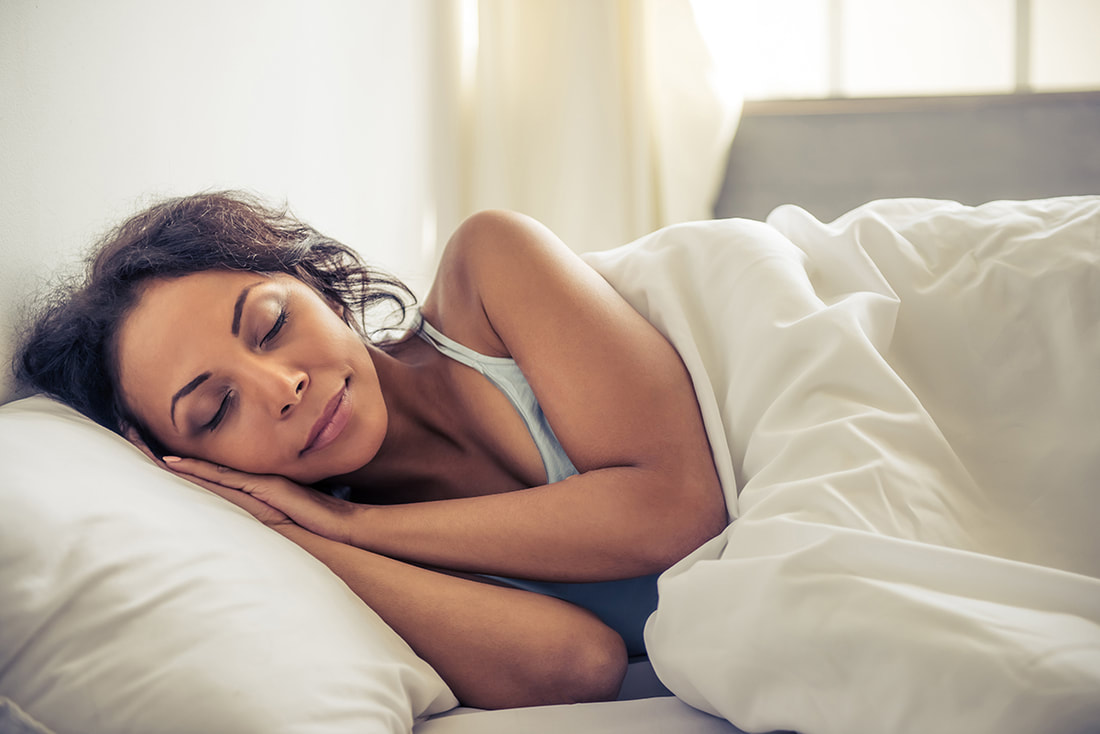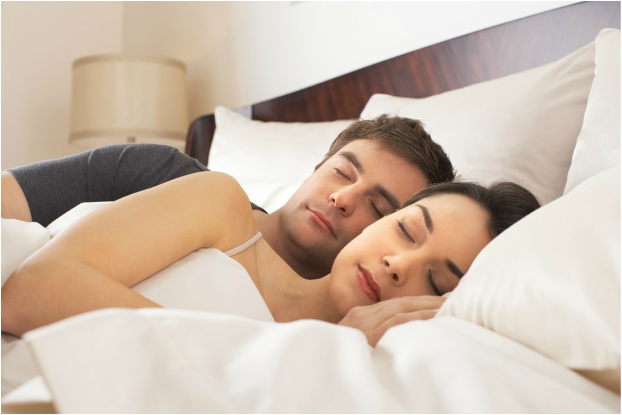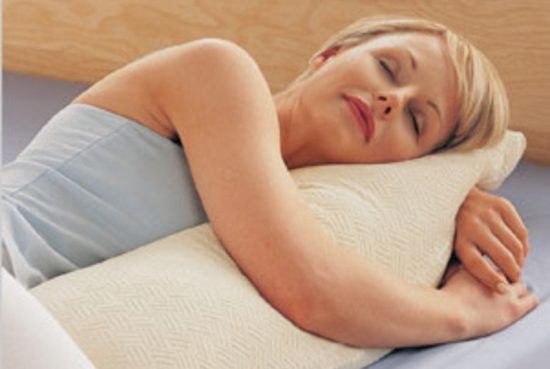|
by Eric Ottenbreit, D.PT
Ahhhhhh… Time for bed. Time to unwind, get comfy, close the eyes, and drift off into peaceful slumber. Or is it? Many of us don't get the recommended 7-9 hours of sleep regularly. The importance or regular, adequate, and quality sleep cannot be emphasized enough. Not sleeping enough can have negative effects that go beyond needing an extra cup of coffee, being grumpy, and craving a nap. Inadequate sleep can increase or lead to pain, depression, anxiety, physical stress, and mental health concerns. Sleep quality and even our ability to fall asleep can be affected by many factors. Life stress, worry, thoughts just spinning in the mind can making sleeping difficult. Pain or discomfort may also delay or interrupt sleeping. There may be many factors that interfere with our ability to sleep. Many of those may be out of our immediate control. However, there are many factors that are within our control. Making a few good choices daily may greatly improve your overall quality of sleep and health. Our sleep cycles are linked to both our behaviors and our natural circadian rhythms. Circadian rhythms are, basically put, our natural body rhythms. They are affected internally by the hypothalamus in the brain, hormone cycles, light-dark cycles, and other factors. External behaviors that can affect circadian rhythms and sleep include our exposure to electronic blue light that is emitted by our electronic devices, caffeine late in the day, thought patterns, life stresses. Some examples of how to improve your quality of sleep from the National Sleep Foundation:
Try to aim for 7-8 hours or deep quality sleep tonight as you head into the week. Good Night! References: http://www.sciencedirect.com/…/article/pii/S1389945704001078 https://sleepfoundation.org/…/how-much-sleep-do-we-really-n… https://www.nigms.nih.gov/…/pages/Factsheet_CircadianRhythm… https://sleepfoundation.org/sleep-top…/what-circadian-rhythm https://sleepfoundation.org/sleep-topics/sleep-hygiene/…/0/1
0 Comments
Think about the last time you went shopping for a new mattress… Were you overwhelmed by the number of choices? Were you lured by a super deal in the paper only to get a mattress that wound up being uncomfortable? With so many choices out there, it can be confusing to know which mattress will be right for you.
Traditional Spring Mattress For years, I have been a fan of the more traditional spring mattress. However, it is important to get one that is not too soft or firm. If the bed is too soft, your body will sink into it and often times this can cause you to have a sore back when you wake up. Too firm and, well, it is like sleeping on a piece of plywood, compressing your hips and shoulders. What you want is a mattress that is both firm and supportive but also includes a soft pillow top. These mattresses can feel very comfortable for several years. As great as traditional spring mattresses can be, make sure to pay attention to how your body feels in the morning. Springs do wear out over time and you’ll notice that what used to be very comfortable will all of a sudden feel like it’s not. Memory Foam Mattress What I really like about memory foam mattresses is that they allow your body to sink in, offering soft support in whatever position you choose to sleep. The exception is if you sleep on your stomach. This is never a good position to sleep in. See why here. You can get memory foam mattresses in a traditional flat style or with a base that adjusts multiple ways. The adjustable ones are the best but quite a bit more expensive. There is probably not a single best mattress for everyone although I lean towards the memory foam for the overall body support and comfort. Either way you go, a key point to remember is you get what you pay for, at least most of the time. A good quality mattress is not cheap. Do your research, go to the different stores and try out the beds. Don’t feel you have to make a decision in an instant. To get a good feel for how a mattress will feel, you need to lie on it in your sleeping position for several minutes. Pay attention to how your body feels while lying there and again when you get up. Purchasing a mattress is a decision you will be living with for at least 10 years, with a memory foam mattress much longer, so make sure you're making the right one. But, if despite your best efforts you do wind up with a bed that isn’t just right, don’t be afraid to do an exchange. Many stores offer 30, 60 and 90-day sleep guarantees. Here’s to a good night’s sleep! Are you having problems sleeping? Do you experience discomfort in various positions? Have you wondered what the best position is for sleeping in optimal comfort?
Over the years, I have been asked about various sleep positions and which is best, but to be honest, the answer is not that simple. You really have to weight the pros and cons of each position and how they relate to your needs. What is the worst sleeping position? Hands down, it is sleeping on your stomach. While this position can be comfortable for some people, when you sleep on your stomach, you put your lower back in a hyperextended and often rotated position. Sleeping like this also puts your neck in an extremely rotated position. Both of these gradually cause potentially significant spinal problems. Now that we know what is the worst, let’s take a look at better options. One option is sleeping on your side. This is typically a fairly neutral position for your lower back but it can be fairly compressive on your shoulder and many people with shoulder problems find this difficult. You can modify a side lying sleeping position using a body pillow. While on your side, put one leg over the pillow, and have the rest of the pillow underneath you with your bottom arm underneath and behind you at your side. This ends up being kind of in-between stomach and side lying position, yet it is very supportive for your lower back and shoulder. A word of caution: This position is not necessarily the most comfortable for people who suffer from neck problems. Another good option is sleeping on your back. This can be a very comfortable position, especially for people with neck and shoulder problems. However, it can be somewhat uncomfortable for your lower back, especially if you have tightness through the front of your hips. If this is the case for you, be aware that sleeping on your back can cause your back to be in a hyperextended position. The solution is pretty simple: stretch your hip flexors and possibly sleep with a pillow or two under your knees. What should you do if you are one of those people who toss and turn during the night and don’t remain in one position? My best advice is to sleep with a body pillow, but get the kind that is shaped like the letter C as this will help cradle you in your desired position and reduce the likelihood of flipping around. Bottom line: Sleeping on your back or side is better than sleeping on your stomach. If you have questions, I invite you to contact our office. We’d be happy to help you find the best solution for your needs. -- Mike Staszak, PT |
Our BlogRead here for more information about our practice, industry news, tips for taking care of your body, and great recipes for healthy living. Categories
All
|




 RSS Feed
RSS Feed